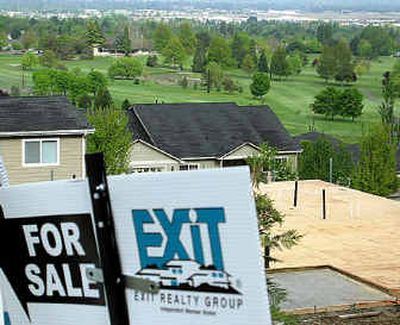Playing through

MEDFORD, Ore. — Retiree Tom Michaels bought a lot four years ago with two vistas in mind from his new home — the Cedar Links Golf Course up-close and the twin Table Rocks in the distance. Now, though, he’s destined to lose one of those views.
The Jantzer family, which created the public golf course in 1972, plans to convert Cedar Links into Cedar Landing, a master-planned development of homes, luxury retirement apartments, townhouses and commercial buildings topped by condominiums, with several miles of walking trails and about 30 acres of open space.
Golf course conversions have become a nationwide trend in recent years as the value of residential land and the number of golf courses climbed while the number of rounds played declined.
A total of 43 golf courses closed in 2003 as 171 new golf courses opened, according to the Florida-based National Golf Foundation. From 1998 to 2004, the number of 18-hole golf course equivalents in the United States grew by nearly 11 percent to 14,958.
These days, most of the golf courses that close are like Cedar Links — public courses about 30 years old that become residential or commercial developments. And most of the golf courses that open are golf resorts like the one in nearby Eagle Point built in 1996 — created by brand-name designers and surrounded by expensive fairway homes.
“As the residential real estate boom that we’re seeing continues, the land that golf courses sit on is probably more valuable as some other use,” said Richard Singer, of the National Golf Foundation. “Throw into that the fact that a lot of golf course businesses are struggling. There’s money to be made doing something else.”
Golf courses are a popular vehicle for land banking, when developers find a holding-pattern use for property with the idea of converting it later to a permanent, intensive development as the land value rises.
Jason Jantzer, Cedar Links general manager, said land banking is a “fair assessment” of what his grandfather, father and uncle had in mind when they created the golf course.
At that time, the course was on the outskirts of a city of 28,450 people. Today, Medford’s population has grown to 69,200, the fairways are ringed with houses, and the asking price for new homes across the street is $500,000-plus.
The homes abutting the Cedar Links fairways weren’t part of the golf course development, but residents such as Michaels said they still paid a premium for their lots. When the 122-acre golf course goes, many expect the value of their property won’t appreciate as quickly.
In addition, they’re worried about increases in traffic and how commercial development might change a neighborhood that, except for Cedar Links, is strictly residential.
“We’re resigned to the fact that we’re going to lose our golf course, but we definitely don’t want commercial property here,” Michaels said. “We don’t want to be staring at a four-story complex. At least give us a choice of what we’re going to look at.”